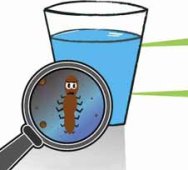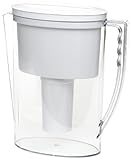
Spring water is best Here’s another good reason to go off-grid: drinking water in the UK is contaminated with prescription drugs from the growing quantity of pharmaceuticals flushed unwittingly down the drain.
Powerful anti-cancer drugs are of particular concern as they can be excreted unaltered from the body into the sewerage system. They are thought to be potentially dangerous because they are highly toxic to dividing cells, are easily dissolved in water and are difficult to destroy by conventional water-treatment techniques.
A study of the theoretical risk posed by one common “cytotoxic” drug, called 5-fluorouracil (5FU), found there could be sufficient amounts of the chemical being flushed into rivers from chemotherapy patients to end up contaminating the water supply in low concentrations.
“It seems highly probable that in parts of the UK cytotoxic drugs will be present at concentrations of a few nanograms [billionths of a gram] per litre in river water,” said Andrew Johnson, a water quality scientist at the Centre for Ecology and Hydrology in Oxford, UK.
The Government has commissioned scientists to test river water at intake points where it is abstracted for human consumption. They will also test drinking water after it has been through the water-treatment cycle to find exactly how the nation’s drinking water is being tainted.
But the givoernment are not taking the problem seriously. The pilot project is not due to begin until next year, and even then water supplies will be examined for only five of the most common and potentially dangerous prescription drugs.
Experts will meet over the next few weeks to decide which drugs to look for and where testing should be carried out. However, an insider said this was likely to be at selected sites on the river Thames because its water-catchment area covered the most densely populated part of the country.
About 50 “cytotoxic” Cancer drugs are prescribed to patients in Britain and researchers are concerned they may have an additive effect – where small concentrations of two or more drugs become more poisonous when absorbed together at the same time in drinking water.
Scientists are also worried that even if cytotoxic drugs are getting into the water supply at doses too low to affect adults, they may still pose a significant risk to babies in the womb because they would be potentially susceptible to the effects of anti-cancer substances aimed at preventing cell division.
The pilot testing has been ordered by the Department for Environment, Food and Rural Affairs (Defra) and the Drinking Water Inspectorate, which is responsible for overseeing the monitoring of water supplies in Britain. The tests will be carried out by a consortium of laboratories led by Defra’s Central Science Laboratory in York.
Under European rules, drinking water in the UK is monitored for nearly 50 different contaminants, but none of these include the active ingredients of prescription drugs, such as the powerful cytotoxic drugs used to treat the growing number of cancer patients.